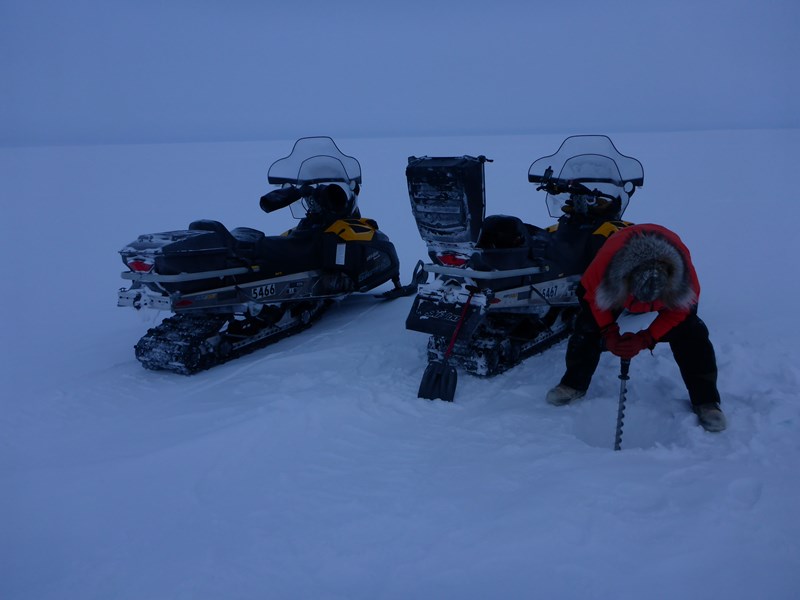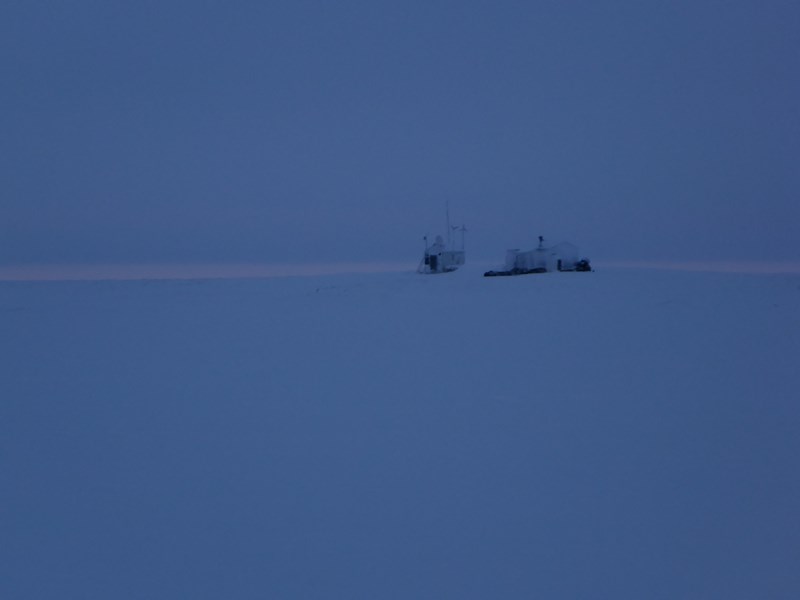- Dec 2
- Children of the Arctic
- Apr 18
- Snow, Wind, and Ice
- Apr 16
- Lesson from the Arctic
- Apr 14
- I Love Doing Science!
- Jan 28
- Bouncing Back in Whiteness
- Jan 27
- The Magical SAR Queen Rules!
- Jan 26
- Arctic Winter Science
- Jan 25
- A Day to Chill
1/27/2018
We finished up our core measurements and maintenance yesterday. So today was time to go the extra mile and try to learn some new things we hadn’t intended. Thanks to Melanie Engram, WERC Research Professional and Remote Sensing Aficionada, we had a really nice and recent synthetic aperture radar (SAR) image acquired last week by the Sentinel satellite run by the European Space Agency to work with for this trip. Below is an example SAR image of our study area with some points we visited today.

The main way we use SAR in this project is to see where lakes freeze solid vs. have water under ice. Bedfast ice gives a dark backscatter signal and floating ice gives a bright white high return SAR signal. Overall more white than black on landscape this year compared to others. Melanie submitted a really nice manuscript documenting 25 years of lake ice dynamics a while back, this peer-review seems like longer than the lifespan of most rodents, but hopefully will get comments soon and this awesome multitemporal analysis of multiple North Slope lake-rich regions will be told. One of our objective for the day was to investigate SAR signals that were anomalous or didn’t quite fit the pattern of what we think should be this or that. So we grabbed GPS point for a handful of these places and set out first on Teshekpuk Lake which has lots of interesting patterns to drill some ice.

Don’t think we really discovered anything notable in our groundtruthing. But had some smooth riding on Teshekpuk Lake, which I kind of think its notable as usually it really rough with sastrugi drifts and pressure ridges.

All the interesting lines on Teshekpuk are mostly cracks in the ice. Not sure I could explain why these show up in radar, but I’m sure Melanie E could tell you. She actually came out with us last spring and ended up staying longer than planned due to major long blizzard, but she rolled with it well. The below image is a grounding crack the runs towards the NSB wildlife cabin.

After finishing up fieldwork spent the rest of the diminishing twilight getting the cabin secured and packed one sled. Tomorrow we'll head back to Barrow. It’s been nice visiting this special place and having a nice warm cabin to work from!
